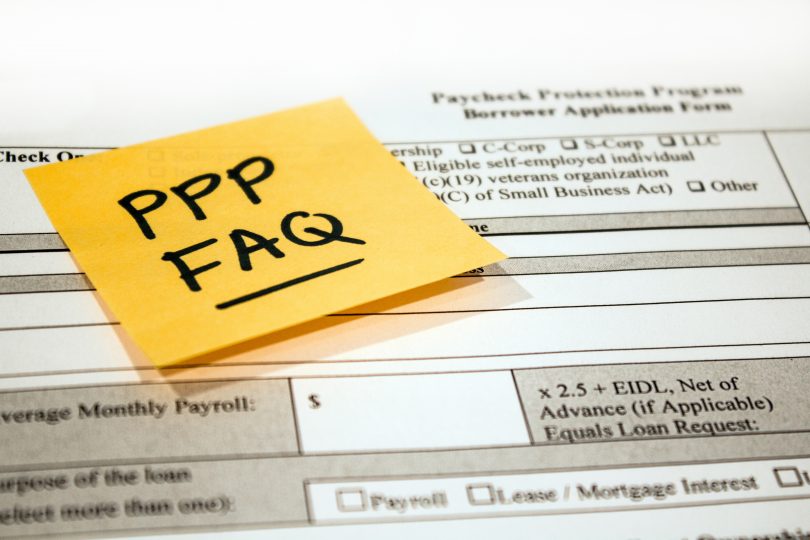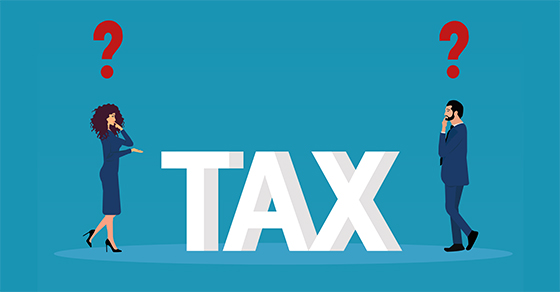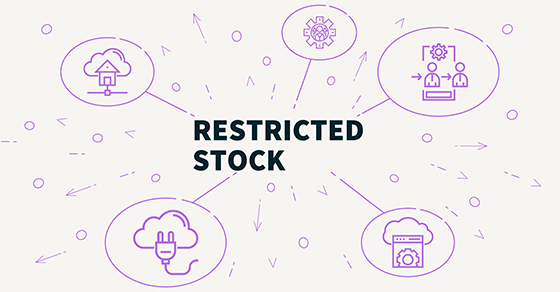PPP Forgiveness- Overview and FAQs
PPP Loan Forgiveness is not automatic. Keep reading to be sure you know what is required.
Key Points:
- There are specific criteria that must be met for the PPP loan to be forgiven.
- The CARES Act is currently full of confusion, inconsistency and gray areas regarding forgiveness.
- You will need to request forgiveness from your lender. It will not be automatically given.
- We believe the intent of the Act (full forgiveness for employers still paying employees) will be the end result of further clarification from SBA.
- We will continue to update you via email, our website, social media and live webinars.
- Regular consulting fees apply for phone calls or emails regarding PPP forgiveness
You applied for the Paycheck Protection Program (PPP), and received your funding. What now? How can you be sure that you qualify for the maximum amount of loan forgiveness?
Your PPP loan forgiveness is directly affected by the actions that you take during the eight weeks after your loans is funded. Now is the time to research and plan.
Our interpretation below is based on careful reading of the statute and the SBA’s two interim final rules. There are many areas of uncertainty, confusion and inconsistency in the current statute. We encourage you to research and seek legal counsel in unclear areas. We will continue to keep you updated as additional guidance is provided.
General Rules for PPP Loan Forgiveness
What is forgivable?
There are four categories of expenses that are forgivable.
- Payroll costs – The SBA defines payroll costs as gross wages of employees up to $100k per year, employer-paid health insurance, employer-paid retirement matching contributions, and employer-paid state and local taxes on payroll (ie: state unemployment). Payroll costs do not include the employer’s matching portion of payroll tax for Social Security and Medicare.
- Rent Obligations – This includes payments for real property under a lease agreement in force before February 15, 2020.
- Utilities – The CARES Act specifically defines utilities as: electricity, gas, water, transportation, telephone, or internet service for which service began before February 15, 2020.
- Interest – The CARES Act uses “covered mortgage obligation,” to describe which interest payments are subject to forgiveness. Interest payments can be for any debt obligation incurred before February 15, 2020. The debt must be a “mortgage on real or personal property.” It does not include payments of principal or unsecured debt.
What criteria must be met for forgiveness?
You must spend the proceeds of your loan on the above four categories. Amounts spent on expenses not in these four categories are not forgivable and will need to be repaid within two years
- 75% of the proceeds of the loan must be spent specifically on payroll costs (Number 1 above).
- You must maintain the headcount of employees at the same pre-COVID levels (defined below).
- You must maintain the salaries of employees at the same pre-COVID levels (defined below)
- You must spend the proceeds of the loan during the 8-week period immediately after you receive them. Amounts spent outside the 8-week period are not forgivable and will need to be repaid within two years.
Is the forgiveness taxable?
The CARES Act states that the forgiveness of debt under the PPP program will not be taxable to the borrower.
How do I know how much will be forgiven?
If you know that you have spent your loan proceeds on eligible expenses, have spent it in the eligible 8-week covered period and have spent at least 75% on payroll costs, you will need to complete two additional steps to calculate how much of the loan is forgivable. The first is based on the number of Full Time Equivalents Employees (FTEs) in your base period, and the second is based on your actual payroll costs in your base period. You should have provided these numbers in the loan application process.
First Reduction Calculation- Employee headcount:
If you reduce the number of full-time employees during the 8-week covered period, the forgiveness amount is reduced by a ratio defined as:
- The average number of FTEs* during the 8-week covered period (numerator) divided by the average number of FTEs during the base period**(denominator).
* one FTE is any number of employees whose work hours equal 30 hours a week.
**there are two acceptable base periods for determining FTEs. Employers can choose which one to use. 1/15/19-6/30/19 or 1/1/2020-2/29/2020
- This is a general number and does not look at individual names or social security numbers in analyzing.
Example:
• Loan amount: $100k (assuming all other criteria met)
• Average number of FTEs in base period: 25
• Average FTEs during 8-week covered period: 15
PPP Calculation: 15/25= 60%
Maximum loan forgiveness: $100k * 60% = $60k forgiven
Second Reduction Calculation- Salary Reduction:
If, at the end of the 8-week covered period, you have reduced wages (per employee) by more than 25% compared to the most recent quarter before the PPP loan was made, the forgiveness amount is reduced by the same amount (over 25%):
- Employees who make more than $100k per year are exempt from this calculation
- This is an employee specific calculation comparing names or SSNs
- The current statute compares an 8-week period with a full quarter and is a point of confusion. We hope to see clarification on this soon.
Example:
PPP Loan closed: April 15, 2020
Employee A’s salary in Q1 2020: $20k
Employee A’s salary during 8-week covered period: $13k
Forgiveness reduction: ($20k – $13k) – ($20k X 25%) = $2k reduction
How can I correct reductions or maximize forgiveness?
You have until June 30, 2020 to restore your full-time employment and salary levels and eliminate the reduction in loan forgiveness. You also could potentially increase forgiveness by increasing employee headcount and salary levels. Read on for more information.
Start Tracking & Planning Now!
All indications are that you will need to drive the loan forgiveness process with your bank. Lenders seem to be as confused as everyone else, so don’t expect too much help in calculating the forgiveness portion of your loan.We expect supporting documentation, such as payroll reports, copies of paid expenses, lease agreements, etc… will be required to validate your forgiveness requested amount. Although it is not necessary, some clients are choosing to keep PPP funds in a separate bank account for easy tracking.
Although this process is currently steeped in uncertainty, remember a few key points. Forgiveness is self-reported and will probably be audited on a perfunctory level, based on the volume of loans and banking manpower. SBA did clarify April 23 that “Lenders are expected to perform a good faith review.” We don’t expect your lender to drill into every employee’s pay on the level that is written in the statute. Also, thousands of organizations, lobbyists and members of Congress are pushing hard to make sure the intent of the Act (full forgiveness) becomes the result. Lastly, any amount not forgiven will be deferred for 6 months and at the very low rate of 1% interest!
BMC will continue to provide online, email and social media updates as we receive clarification and insight into PPP forgiveness. Look for information on a Webinar on PPP Forgiveness soon!
If you would like for us to analyze or assist you directly, regular consulting fees will apply.
PPP Forgiveness FAQs & Gray Areas
Can the loan be 100% forgiven?
Unclear: The SBA’s calculation method does not currently allow 100% forgiveness although we believe full forgiveness was the intention. It uses an 8-week period in the forgiveness calculation, a 2.5 month period in calculating the loan amount and a one quarter (undefined) period for defining equivalent salary.
Insight: The only way to obtain full loan forgiveness is to increase payroll costs in the 8-week covered period relative to the base period. We expect to see clarification on this gray area very soon!
Why are the covered period and base period unequal time periods for the salary reduction?
Clear: The forgiveness period is 8 weeks but the base period is 3 months
Unclear: A straight comparison will always result in forgiveness reduction.
Insight: This is a ridiculous formula and we expect it to be modified to make both periods an average of month or pay period.
Can bonuses be forgiven?
Clear: Wages are a forgivable expense.
Unclear: Can bonuses paid during the 8-week period be forgiven? What if the bonus causes the employee’s annualized salary to exceed the 12-month salary that was used to determine the loan amount (excess salary)? Is back pay included in the forgiveness amount?
Insight: Forgiveness was intended to cover regular & expected salary and bonuses. If your documentation can show that bonuses are a norm in the 8-week period, they should count toward forgiveness. We recommend that you have good documentation as to why the 8-week covered period has bonuses not included in the prior period. Back pay unable to be paid due to lack of funds prior to PPP funding should be allowed.
Year-end bonuses paid in first quarter are causing my 8-week salary rates to decrease. Will I be penalized for this salary reduction?
Clear: Salary reduction compares individual salaries between the quarter immediately preceding and the 8 weeks following the loan. Any individual salary reduction will cause forgiveness reduction.
Unclear: What if bonuses are a norm in one period (ie: end of year bonuses paid in the 1st quarter) but not expected in the other period?
Insight: In addition to the anticipated clarification regarding the uneven comparison periods, we hope the SBA will have allowance for expected and necessary reductions in salary. We recommend that you have good documentation as to why the prior period has bonuses not included in the 8-week covered period.
Bonuses paid in the 8-week period cause an EE’s annualized salary to be over $100k, even though her actual salary is not. Will those wages be deducted from forgiveness?
Clear: Employees making more than $100k are not included in the wage reduction calculation.
Unclear: The statute uses the term “during any single pay period,” to describe excluded EEs. This could be interpreted to include an EE making less than $100k if a bonus or commission during any single pay period is greater than the $8333/month calculation used throughout the statute.
Insight: We believe the intent was only to exclude EEs making $100k in an actual year, and expect to see a correction from SBA.
Can I pay for expenses not incurred in the 8-week period?
Clear: Forgivable expenses include “costs incurred and payments made during the covered period”, according to the statute.
Unclear: Do they have to be both incurred and made?
Insight: The CARES Act is unclear. There is almost always a lapse between when an expense is incurred and it is paid, especially payroll costs. We expect that a reasonableness factor will be used when determining if expenses meet this definition.
Is rent paid to myself included? What about prepaid rent?
Clear: Rent is forgivable if a lease is in force before February 15, 2020.
Unclear: Does the lease need to be in writing? Are related-party leases included? Are payments covered if they relate to a period after the eight-week period (prepaid rent)?
Insight: There is nothing in the current Act or interim final rules that exclude related-party leases or prepaid rent. However, it is unlikely that forgiveness was intended to cover prepaid rent as the Act does say expenses should be incurred in the 8-week period. Any related-party leases should be in writing and established prior to February 15, 2020 to ensure forgiveness eligibility.
What is the order the forgiveness reduction factors?
Clear: We know there are 4 possible reductions from forgiveness.
Unclear: Even though the order of the calculations will affect the total forgiveness amount, SBA has offered no guidance on ordering rules.
Insight: Until the SBA clarifies, we assume the order is:
- Figure your total cost (make sure 75% of costs are payroll)
- Reduce the total cost by the amount of any reduction under the headcount reduction rule
- Reduce the new amount by the amount of any reduction under the wage reduction rule
- Reduce the new amount by the amount that non-payroll costs exceed 25% of the total cost
Can I deduct the forgiven expenses?
Clear: PPP forgiveness is tax-free. The IRS typically disallows deductible expenses related to tax-exempt income.
Insights: If no deduction is allowed, then there is no tax benefit (no income from the forgiveness and no deduction for the expense). We know that Treasury is aware of this (assumed) unintended consequence and hope to see a fix.
Am I bad at math or does the forgiveness formula for employee headcount not work?
Clear: The formula as currently written does not work! Forgiveness is reduced, specifically for the employee headcount, by taking the average FTEs per month during the eight-week period, divided by average FTEs per month during the base period (several options here) and multiplying that number by the total expense amount.
Unclear: The formula does not work as written because it produces a 100% reduction in the forgiveness amount unless headcount increases. For example, if you had 5 EEs pre-COVID and 5 EEs during the 8-week period (assuming $50k in forgivable expenses), the reduction amount is $50k x 5 / 5 = $50k or 100% reduction.
Insight: This is obviously an error, and we expect a new formula. The expected new formula is forgivable expense amount multiplied by the difference between 1 and the original percentage. Same example, $50k x (1-1) = 0, or no reduction in forgivable expenses.
My employee quit or was fired for a non-COVID reason. Will I still be penalized for headcount reduction?
Clear: The reason for headcount reduction is not currently a factor in the formula.
Unclear: Will lenders be allowed leeway for employee reductions necessary/merited or unrelated to COVID?
Insight: We do not know if lenders will be required to stick to the strict SBA formula or have a reasonableness factor.
My employee is making more on unemployment than I paid him and doesn’t want to come back! I can’t hire anyone else because we are still shut down by the state. Will I still be penalized for headcount reduction?
Clear: The reason for headcount reduction is not currently a factor in the formula.
Insight: We think it unreasonable that clients who need PPP funds to pay other operating costs to keep their business alive until the states allow them to reopen should be penalized for factors outside of their control. We hope to see some clarification on this soon.
I don’t have work for my employees, because we are shut down by the state, but have PPP funds to pay them? Can I pay them not to work?
Clear: The federal government allows for Emergency Paid Leave under other parts of the CARES Act.
Unclear: Are there any discrimination implications in paying some employees to work and others not to work?
Insight: We recommend creating a new Emergency COVID Leave policy if you are paying employees who are not currently working. We will have template policies available soon.
What do they mean by “most recent full quarter” before the covered period when calculating salary reduction?
Clear: Although other parts of the PPP statute read “calendar quarter”, the salary reduction formula only indicated “most recent full quarter.”
Unclear: This could be the most recent calendar quarter (1st quarter 2020) or the most recent 3 months (Feb-April 2020 for anyone receiving funds in May).
Insight: We expect lenders to find either reasonable.
What is the exception for rehires in the headcount & wage reductions?
Clear: If there is a reduction in wages or employee count between February 15, 2020, and April 26, 2020, that will be ignored if the number of FTEs or wage of a given employee is restored by June 30, 2020. The 8-week period for many clients will be over before June 30.
Unclear: Can the restoration occur after the 8-week period but before June 30, 2020? Is there any difference between restoration on week 1 or week 8?
Insight: Possible fixes include restoration to occur by a certain point in the 8-week period (ie: by week 3), or by a pro-rated amount. The reality is that you will need to have most of your employees working for most of the 8-week period in order to meet the 75% threshold.
If I replace an employee with a same-salary employee, will I be penalized in the salary reduction formula?
Clear: Salary reduction does look at individual employees, not just total salary amounts. If an employee is included in the base period – the most recent full quarter (however that is defined), but is not included in the 8-week covered period, then there would be a 100% reduction in that employee’s wages, even though there is no headcount reduction.
Unclear: If the intent of the program has been met (keeping workers employed), it seems ridiculous to penalize for factors often outside of the employer’s control (original employee may be unavailable for rehire).
Insight: Not only did the statute not provide an ordering for rules, it did not take into consideration how these different rules would interact. Hopefully, a third final rule will be forthcoming and offer clarity.




